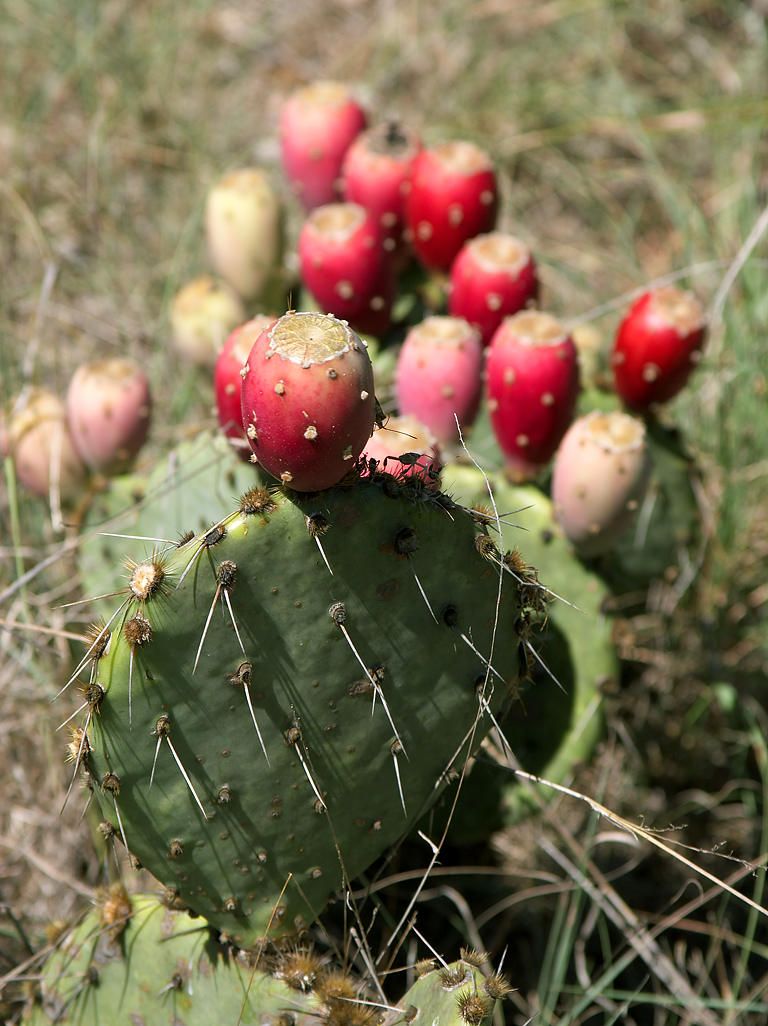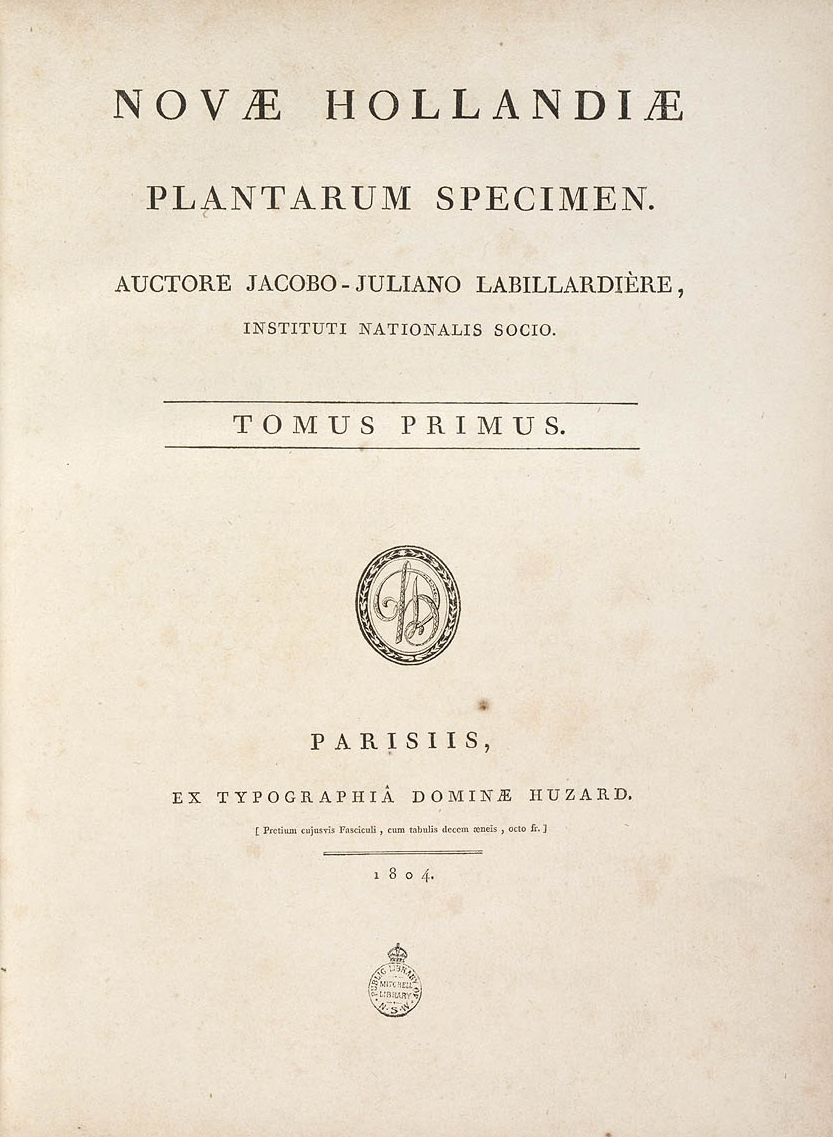 |
Phyllode
Phyllodes are modified petiole (botany), petioles or leaf stems, which are leaf-like in appearance and function. In some plants, these become flattened and widened, while the leaf itself becomes reduced or vanishes altogether. Thus the phyllode comes to serve the purpose of the leaf. Some important examples are ''Euphorbia royleana'' which are cylindrical and ''Opuntia'' which are flattened. They are common in the genus ''Acacia'', especially the Australian species, at one time put in ''Acacia'' subg. ''Phyllodineae''. Sometimes, especially on younger plants, partially formed phyllodes bearing reduced leaves can be seen. The illustration (to the right) of ''Acacia suaveolens'' from ''Novae Hollandiae plantarum specimen'' shows the juvenile true leaves, together with the developing phyllodes, and the phyllodes of the mature plant. The genus, ''Daviesia'', in the family Fabaceae, is characterised in part by the plants having phyllodes. File:Acacia suaveolens 9064505997 9f14f5f117 ... [...More Info...] [...Related Items...] OR: [Wikipedia] [Google] [Baidu] |
|
Daviesia Nudiflora
''Daviesia nudiflora'' is a species of flowering plant in the family Fabaceae and is endemic to the south-west of Western Australia. It is a bushy shrub with sharply pointed, egg-shaped to elliptic or oblong phyllodes, and yellow-orange flowers with reddish-brown markings. Description ''Daviesia nudiflora'' is a bushy shrub that typically grows to a height of up to and has more or less angular or ridged branchlets. Its phyllodes are sharply pointed, egg-shaped to elliptic or oblong, long, wide, but sometimes scale-like and long near the base of the plant. The flowers are arranged singly or in pairs in the axils on a peduncle long, the pedicel long with bracts at the base of the peduncle. The sepals are long and joined at the base, the two upper lobes joined for most of their length and the lower three broadly triangular and about long. The standard petal is egg-shaped or elliptic, about long and wide, and yellow-orange with a red to brown base. The wings are long and r ... [...More Info...] [...Related Items...] OR: [Wikipedia] [Google] [Baidu] |
|
 |
Petiole (botany)
In botany, the petiole () is the stalk that attaches the leaf blade to the Plant stem, stem. It is able to twist the leaf to face the sun, producing a characteristic foliage arrangement (spacing of blades), and also optimizing its exposure to sunlight. Outgrowths appearing on each side of the petiole in some species are called stipules. The terms wikt:petiolate, petiolate and wikt:apetiolate, apetiolate are applied respectively to leaves with and without petioles. Description The petiole is a stalk that attaches a leaf to the plant stem. In petiolate leaves the leaf stalk may be long (as in the leaves of celery and rhubarb), or short (for example basil). When completely absent, the blade attaches directly to the stem and is said to be Sessility (botany), sessile or apetiolate. Subpetiolate leaves have an extremely short petiole, and may appear sessile. The broomrape family Orobanchaceae is an example of a family in which the leaves are always sessile. In some other plant group ... [...More Info...] [...Related Items...] OR: [Wikipedia] [Google] [Baidu] |
|
Leaf
A leaf (: leaves) is a principal appendage of the plant stem, stem of a vascular plant, usually borne laterally above ground and specialized for photosynthesis. Leaves are collectively called foliage, as in "autumn foliage", while the leaves, stem, flower, and fruit collectively form the Shoot (botany), shoot system. In most leaves, the primary Photosynthesis, photosynthetic Tissue (biology), tissue is the palisade mesophyll and is located on the upper side of the blade or lamina of the leaf, but in some species, including the mature foliage of ''Eucalyptus'', palisade mesophyll is present on both sides and the leaves are said to be isobilateral. The leaf is an integral part of the stem system, and most leaves are flattened and have distinct upper (Glossary of botanical terms#adaxial, adaxial) and lower (Glossary of botanical terms#abaxial, abaxial) surfaces that differ in color, Trichome, hairiness, the number of stomata (pores that intake and output gases), the amount and ... [...More Info...] [...Related Items...] OR: [Wikipedia] [Google] [Baidu] |
|
 |
Acacia Suaveolens 155867
''Acacia'', commonly known as wattles or acacias, is a genus of about of shrubs and trees in the subfamily Mimosoideae of the pea family Fabaceae. Initially, it comprised a group of plant species native to Africa, South America, and Australasia, but is now reserved for species mainly from Australia, with others from New Guinea, Southeast Asia, and the Indian Ocean. The genus name is Neo-Latin, borrowed from Koine Greek (), a term used in antiquity to describe a preparation extracted from ''Vachellia nilotica'', the original type species. Several species of ''Acacia'' have been introduced to various parts of the world, and two million hectares of commercial plantations have been established. Description Plants in the genus ''Acacia'' are shrubs or trees with bipinnate leaves, the mature leaves sometimes reduced to phyllodes or rarely absent. There are 2 small stipules at the base of the leaf, but sometimes fall off as the leaf matures. The flowers are borne in spikes ... [...More Info...] [...Related Items...] OR: [Wikipedia] [Google] [Baidu] |
|
Acacia
''Acacia'', commonly known as wattles or acacias, is a genus of about of shrubs and trees in the subfamily Mimosoideae of the pea family Fabaceae. Initially, it comprised a group of plant species native to Africa, South America, and Australasia, but is now reserved for species mainly from Australia, with others from New Guinea, Southeast Asia, and the Indian Ocean. The genus name is Neo-Latin, borrowed from Koine Greek (), a term used in antiquity to describe a preparation extracted from '' Vachellia nilotica'', the original type species. Several species of ''Acacia'' have been introduced to various parts of the world, and two million hectares of commercial plantations have been established. Description Plants in the genus ''Acacia'' are shrubs or trees with bipinnate leaves, the mature leaves sometimes reduced to phyllodes or rarely absent. There are 2 small stipules at the base of the leaf, but sometimes fall off as the leaf matures. The flowers are borne in spik ... [...More Info...] [...Related Items...] OR: [Wikipedia] [Google] [Baidu] |
|
|
Acacia Suaveolens
''Acacia'', commonly known as wattles or acacias, is a genus of about of shrubs and trees in the subfamily Mimosoideae of the pea family Fabaceae. Initially, it comprised a group of plant species native to Africa, South America, and Australasia, but is now reserved for species mainly from Australia, with others from New Guinea, Southeast Asia, and the Indian Ocean. The genus name is Neo-Latin, borrowed from Koine Greek (), a term used in antiquity to describe a preparation extracted from ''Vachellia nilotica'', the original type species. Several species of ''Acacia'' have been introduced to various parts of the world, and two million hectares of commercial plantations have been established. Description Plants in the genus ''Acacia'' are shrubs or trees with bipinnate leaves, the mature leaves sometimes reduced to phyllodes or rarely absent. There are 2 small stipules at the base of the leaf, but sometimes fall off as the leaf matures. The flowers are borne in spikes ... [...More Info...] [...Related Items...] OR: [Wikipedia] [Google] [Baidu] |
|
|
Daviesia
''Daviesia'', commonly known as bitter peas, is a genus of about 130 species of flowering plants in the family Fabaceae, and is endemic to Australia. Plants in the genus ''Daviesia'' are shrubs or small trees with leaves modified as phyllodes or reduced to scales. The flowers are arranged singly or in groups, usually in leaf axils, the sepals joined at the base with five teeth, the petals usually yellowish with reddish markings and the fruit a pod. Description Plants in the genus ''Daviesia'' are shrubs or small trees with their leaves modified as phyllodes that are often sharply-pointed, or have leaves reduced to scales with the stems modified as cladodes. The flowers are usually arranged in leaf axils, either singly or in clusters or racemes with bracts sometimes present on the peduncles, pedicels or flowering stems. The sepals are joined at the base to form a bell-shaped tube with five teeth, the two upper teeth usually wider and the petals are usually yellowish with reddish ... [...More Info...] [...Related Items...] OR: [Wikipedia] [Google] [Baidu] |
|
 |
Euphorbia Royleana
''Euphorbia'' is a large and diverse genus of flowering plants, commonly called spurge, in the family Euphorbiaceae. Euphorbias range from tiny annual plants to large and long-lived trees, with perhaps the tallest being ''Euphorbia ampliphylla'' at or more. The genus has roughly 2,000 members, making it one of the largest genera of flowering plants. It also has one of the largest ranges of chromosome counts, along with ''Rumex'' and ''Senecio''. ''Euphorbia antiquorum'' is the type species for the genus ''Euphorbia''. It was first described by Carl Linnaeus in 1753 in ''Species Plantarum''. Some euphorbias are widely available commercially, such as poinsettias at Christmas. Some are commonly cultivated as ornamentals, or collected and highly valued for the aesthetic appearance of their unique floral structures, such as the crown of thorns plant (''Euphorbia milii''). Succulent euphorbias from the deserts of Southern Africa and Madagascar have evolved physical characteristi ... [...More Info...] [...Related Items...] OR: [Wikipedia] [Google] [Baidu] |
 |
Opuntia
''Opuntia'', commonly called the prickly pear cactus, is a genus of flowering plants in the cactus family Cactaceae, many known for their flavorful fruit and showy flowers. Cacti are native to the Americas, and are well adapted to arid climates; however, they are still vulnerable to alterations in precipitation and temperature driven by climate change. The plant has been introduced to parts of Australia, southern Europe, the Middle East, and northern Africa. ''Prickly pear'' alone is more commonly used to refer exclusively to the fruit, but may also be used for the plant itself; in addition, other names given to the plant and its specific parts include ''tuna'' (fruit), ''sabra'', ''sabbar'', '' nopal'' (pads, plural ''nopales'') from the Nahuatl word , nostle (fruit) from the Nahuatl word , and paddle cactus. The genus is named for the Ancient Greek city of Opus. The fruit and leaves are edible. The most common culinary species is the "Barbary fig" ('' Opuntia ficus-indica ... [...More Info...] [...Related Items...] OR: [Wikipedia] [Google] [Baidu] |
 |
Novae Hollandiae Plantarum Specimen
''Novae Hollandiae Plantarum Specimen'' is a two-volume work describing the flora of Australia. Facsimiles of the originals can be found in the onlinBiodiversity Heritage Library (Vol.1)anVol 2) The author was the French botanist Jacques Labillardière, who visited the region in 1792 with the d'Entrecasteaux expedition. Published between 1804 and 1806, it is one of the earliest works to describe the plants of the continent; according to Denis and Maisie Carr, " practical terms, this was the first general flora of Australia." The work describes the botanical collections made by himself and his companion on the d'Entrecasteaux expedition, Charles Riche, and the unattributed and later collections of Nicolas Baudin's expedition. Labillardière's collections were seized by the English, but were returned to him in France at the intervention of Joseph Banks. He made his collections at Observatory Island and other locations at the Archipelago of the Recherche. Extensive collection were ... [...More Info...] [...Related Items...] OR: [Wikipedia] [Google] [Baidu] |
 |
Fabaceae
Fabaceae () or Leguminosae,International Code of Nomenclature for algae, fungi, and plants. Article 18.5 states: "The following names, of long usage, are treated as validly published: ....Leguminosae (nom. alt.: Fabaceae; type: Faba Mill. Vicia L.; ... When the Papilionaceae are regarded as a family distinct from the remainder of the Leguminosae, the name Papilionaceae is conserved against Leguminosae." English pronunciations are as follows: , and . commonly known as the legume, pea, or bean family, is a large and agriculturally important family of |